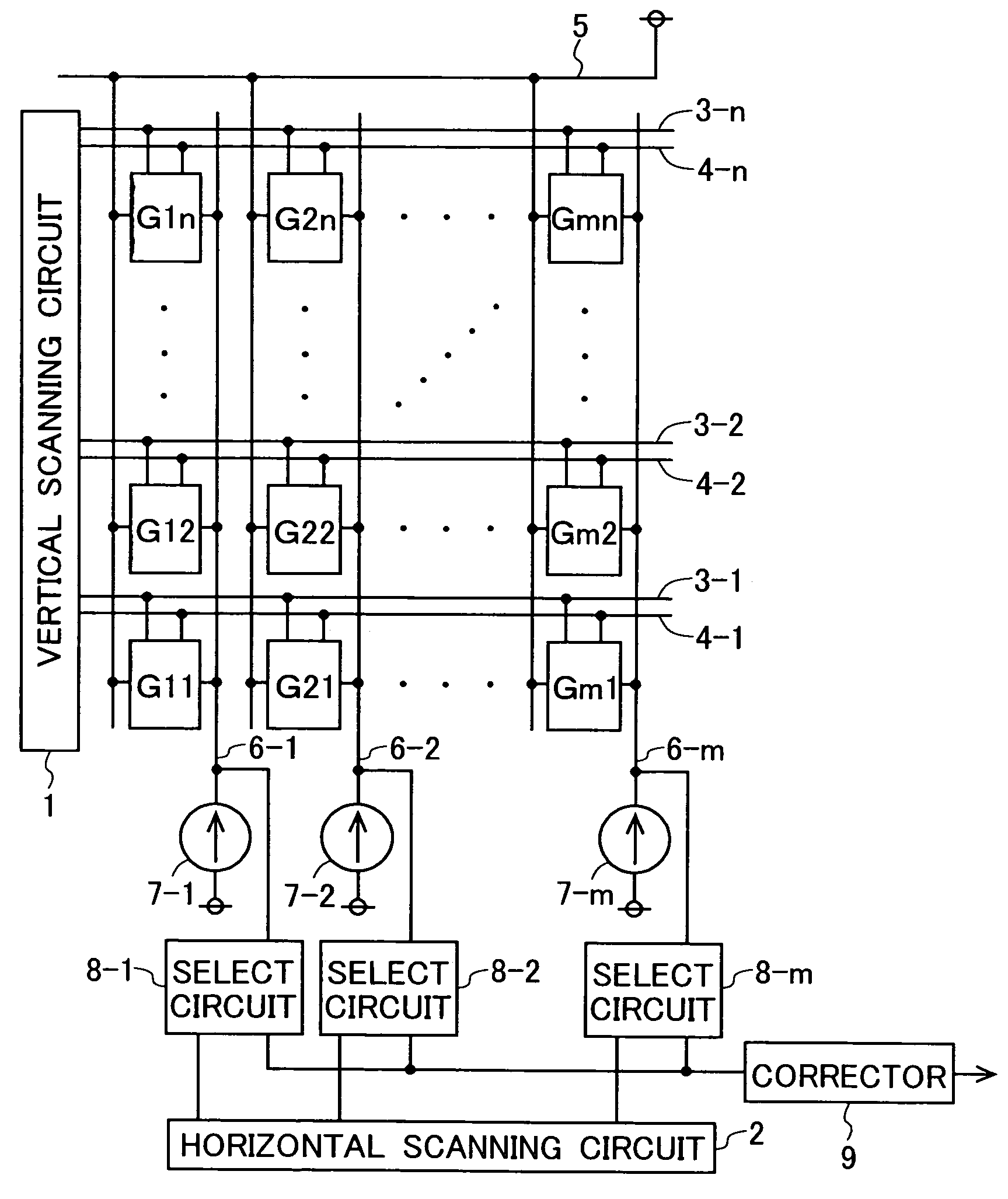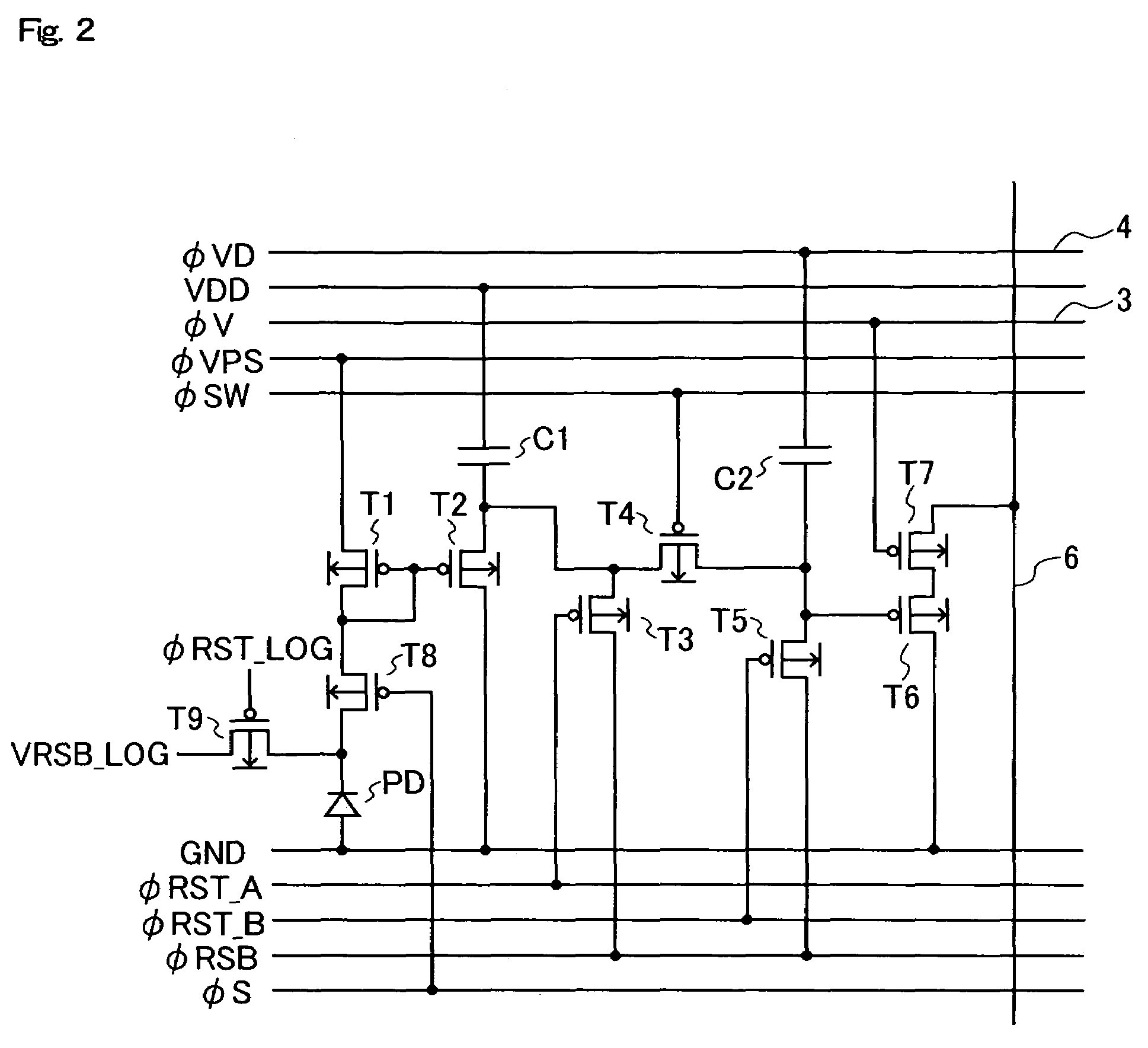Solid-state image-sensing device
a solid-state image and image sensing technology, applied in the field of solid-state image sensing devices, can solve the problems of calibration noise data not being acquired by ordinary image sensing, and the production of fixed-pattern noise components among pixels, and achieve the effect of variable sensitivity among individual pixels
- Summary
- Abstract
- Description
- Claims
- Application Information
AI Technical Summary
Benefits of technology
Problems solved by technology
Method used
Image
Examples
first embodiment
[0041]In the present invention, under the control of the timing generator and the signal controller mentioned above, an operation for acquiring one frame worth of sensed-image data and an operation for acquiring one frame worth of noise data are performed alternately. The noise data used for difference calculation may be updated every time one frame worth of noise data is acquired, or may be generated by averaging a plurality of frames worth of noise data.
second embodiment
[0042]In the present invention, under the control of the timing generator and the signal controller mentioned above, an operation for acquiring a plurality of frames worth of sensed-image data and an operation for acquiring one frame worth or a plurality of frames worth of noise data are performed alternately. The combination of the number of frames of sensed-image data and the number of frames of noise data may be fixed, or may be varied according to variation in an environmental condition such as temperature, or may be freely set by user operation.
[0043]By providing a sensor for detecting variation in an environmental condition (for example, a temperature sensor), and making the above-mentioned signal controller perform control according to the output of the sensor, it is possible to vary the combination of the number of frames of sensed-image data and the number of frames of noise data according to variation in an environmental condition such as temperature. By providing an input...
third embodiment
[0044]In the present invention, under the control of the timing generator and the signal controller mentioned above, an operation for acquiring one frame worth of sensed-image data and an operation for acquiring one line worth of noise data are performed alternately, and meanwhile the line on which the one line worth of noise data are acquired is sequentially varied. Then, after noise data on all lines of one frame are acquired, based on the noise data on all the lines as stored in a frame memory, one frame worth of noise data are generated.
[0045]For example, the sensed-image data of a first frame is read out, then the noise data of only a first line thereof is read out, then the sensed-image data of a second frame is read out, then the noise data of only a second line thereof is read out, and then the sensed-image data of a third frame is read out. For example, in a case where the total number of lines over all the pixels is 480, an operation of reading out the sensed-image data of...
PUM
 Login to View More
Login to View More Abstract
Description
Claims
Application Information
 Login to View More
Login to View More - R&D
- Intellectual Property
- Life Sciences
- Materials
- Tech Scout
- Unparalleled Data Quality
- Higher Quality Content
- 60% Fewer Hallucinations
Browse by: Latest US Patents, China's latest patents, Technical Efficacy Thesaurus, Application Domain, Technology Topic, Popular Technical Reports.
© 2025 PatSnap. All rights reserved.Legal|Privacy policy|Modern Slavery Act Transparency Statement|Sitemap|About US| Contact US: help@patsnap.com



